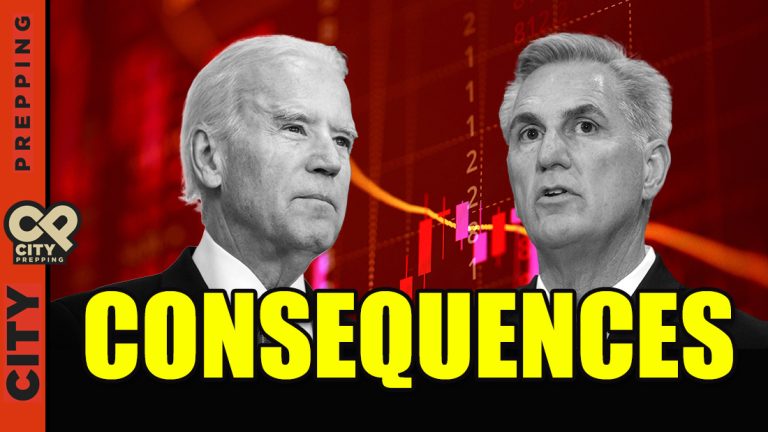- TEMPORARY EXTRAORDINARY MEASURES
 The first extraordinary measure the Treasury takes is to meet its spending obligations from the cash reserves on hand. As of January 17, 2023, the Treasury had a cash balance of $322 billion. That may seem like a lot, but your government spends a lot. Fish and Wildlife and Parks, Department of Homeland Security, Medicare Premiums, Social Security, Department of Agriculture, Federal Crop Insurance, Department of Justice, Railroad Workers Retirement, Federal Employee Retirement, Department of Veteran Affairs, the Postal Service, Unemployment Insurance, Defense Vendor Payments, Child Nutrition Program, Individual & Business tax refunds, barely scratch the surface of monthly expenditures. Hundreds of programs, contracts, and services are paid for each month, so simply surviving on reserves of cash on hand is like paying your bills with savings when you might lose your job in two months.
Still, these programs make up the first round of temporary extraordinary measures. The Treasury also halts the daily investments in the Exchange Stabilization Fund. Operated by the Treasury, the ESF stabilizes exchange rates by buying and selling foreign currencies. The suspension of daily reinvesting in this fund means the US has less influence on global exchange rates and the strength of the US dollar–the world’s reserve currency. Finally, the Treasury can suspend the sale of savings bonds and stop issuing State and Local Government Series Treasury securities. Once a debt ceiling impasse is resolved, these funds will be made whole so that beneficiaries are unaffected.
The first extraordinary measure the Treasury takes is to meet its spending obligations from the cash reserves on hand. As of January 17, 2023, the Treasury had a cash balance of $322 billion. That may seem like a lot, but your government spends a lot. Fish and Wildlife and Parks, Department of Homeland Security, Medicare Premiums, Social Security, Department of Agriculture, Federal Crop Insurance, Department of Justice, Railroad Workers Retirement, Federal Employee Retirement, Department of Veteran Affairs, the Postal Service, Unemployment Insurance, Defense Vendor Payments, Child Nutrition Program, Individual & Business tax refunds, barely scratch the surface of monthly expenditures. Hundreds of programs, contracts, and services are paid for each month, so simply surviving on reserves of cash on hand is like paying your bills with savings when you might lose your job in two months.
Still, these programs make up the first round of temporary extraordinary measures. The Treasury also halts the daily investments in the Exchange Stabilization Fund. Operated by the Treasury, the ESF stabilizes exchange rates by buying and selling foreign currencies. The suspension of daily reinvesting in this fund means the US has less influence on global exchange rates and the strength of the US dollar–the world’s reserve currency. Finally, the Treasury can suspend the sale of savings bonds and stop issuing State and Local Government Series Treasury securities. Once a debt ceiling impasse is resolved, these funds will be made whole so that beneficiaries are unaffected.
- PROGRESS IS PUT ON HOLD
 Is your city repairing potholes or building a new traffic corridor? The chances are that it is being paid through Federal grants or with Federal money, so those projects get put on hold. Does your employer have a government contract or is trying to obtain one? Well, those are put on hold as well. New spending is suspended. Were you planning on retiring someday, but you work for the government, post office, or railways? No new money is going into that until the debt ceiling is lifted. Your state is going to have to wait on that Federal funding that may pay your salary in some small part. Nutrition programs and other social-safety programs get put on hold. Eventually, parks and other services close, and workers are furloughed several days per week or laid off.
In some ways, the government is forced to downsize and scale back operations. At this point, you start to realize all the little and big things the government provides you with. The economy, already struggling, suffers the most. The Treasury Department’s approach would be to postpone payments for all other liabilities until it accumulated sufficient funds to fulfill the whole day’s obligations. To clarify, it would postpone payments to agencies, contractors, Social Security beneficiaries, and Medicare providers rather than trying to selectively choose which payments to make on a specific day. If you work with any agency or under any contract with the federal government, expect cutbacks. If you remember the last significant debt-ceiling crisis, there were a lot of furloughed workers, national parks closed, and libraries adjusted their hours. Basically, everything slowed down, and many worried about their paychecks. Progress was put on hold.
Is your city repairing potholes or building a new traffic corridor? The chances are that it is being paid through Federal grants or with Federal money, so those projects get put on hold. Does your employer have a government contract or is trying to obtain one? Well, those are put on hold as well. New spending is suspended. Were you planning on retiring someday, but you work for the government, post office, or railways? No new money is going into that until the debt ceiling is lifted. Your state is going to have to wait on that Federal funding that may pay your salary in some small part. Nutrition programs and other social-safety programs get put on hold. Eventually, parks and other services close, and workers are furloughed several days per week or laid off.
In some ways, the government is forced to downsize and scale back operations. At this point, you start to realize all the little and big things the government provides you with. The economy, already struggling, suffers the most. The Treasury Department’s approach would be to postpone payments for all other liabilities until it accumulated sufficient funds to fulfill the whole day’s obligations. To clarify, it would postpone payments to agencies, contractors, Social Security beneficiaries, and Medicare providers rather than trying to selectively choose which payments to make on a specific day. If you work with any agency or under any contract with the federal government, expect cutbacks. If you remember the last significant debt-ceiling crisis, there were a lot of furloughed workers, national parks closed, and libraries adjusted their hours. Basically, everything slowed down, and many worried about their paychecks. Progress was put on hold.
- THE DOLLAR FALLS
 The most detrimental related consequences are not as readily apparent as a closed sign at the post office or programs put on hold. The debt-ceiling debate is a self-inflicted wound on the US economy. One of the major consequences of this debt-ceiling debate and the temporary extraordinary measures is reduced household wealth and business confidence. These are the macroeconomic effects of debt-ceiling brinkmanship. Any potential default on US debt has the potential to be catastrophic: credit markets could freeze, the value of the dollar could plummet, and U.S. interest rates could skyrocket, potentially resulting in a financial crisis and recession that could echo the events of 2008 or worse. Your employer isn’t likely to take on that new contract or employee and expand the business in such a climate. Neither are you likely to want to buy a house or make a similar big purchase with the US economy about to collapse.
Other countries see this continued in-fighting and failure to come to terms with our debt and shy away from buying US debt. They start to look for other currencies to transact in, shedding their dollars held in reserve for more translatable and reliable currencies. Maybe that’s the Chinese Yuan, Russian Rouble, the Euro, British Pound, or some new BRICS currency. Over half of the foreign currency reserves globally are kept in U.S. dollars. Hence, an abrupt decrease in the currency’s value can impact the treasury market as the worth of these reserves goes down.
If a default occurs, the U.S. economy may face a recession more severe than the Great Depression. The international financial system heavily relies on the U.S. dollar and Treasury securities. If the impasse on the debt limit leads to a default on Treasury securities, it could be catastrophic, similar to or worse than the 2008 financial crisis. Even before we reach that point, other things can happen–like the slashing of America’s credit rating. That happened in 2011 when America’s credit rating was downgraded to AA+ from triple-A+ by Standards and Poor’s. As a result, American borrowing costs went up by $1.3 billion that year. When this slashing of America’s credit rating occurs, interest rates skyrocket, and people worldwide look for more stable investments outside America.
The most detrimental related consequences are not as readily apparent as a closed sign at the post office or programs put on hold. The debt-ceiling debate is a self-inflicted wound on the US economy. One of the major consequences of this debt-ceiling debate and the temporary extraordinary measures is reduced household wealth and business confidence. These are the macroeconomic effects of debt-ceiling brinkmanship. Any potential default on US debt has the potential to be catastrophic: credit markets could freeze, the value of the dollar could plummet, and U.S. interest rates could skyrocket, potentially resulting in a financial crisis and recession that could echo the events of 2008 or worse. Your employer isn’t likely to take on that new contract or employee and expand the business in such a climate. Neither are you likely to want to buy a house or make a similar big purchase with the US economy about to collapse.
Other countries see this continued in-fighting and failure to come to terms with our debt and shy away from buying US debt. They start to look for other currencies to transact in, shedding their dollars held in reserve for more translatable and reliable currencies. Maybe that’s the Chinese Yuan, Russian Rouble, the Euro, British Pound, or some new BRICS currency. Over half of the foreign currency reserves globally are kept in U.S. dollars. Hence, an abrupt decrease in the currency’s value can impact the treasury market as the worth of these reserves goes down.
If a default occurs, the U.S. economy may face a recession more severe than the Great Depression. The international financial system heavily relies on the U.S. dollar and Treasury securities. If the impasse on the debt limit leads to a default on Treasury securities, it could be catastrophic, similar to or worse than the 2008 financial crisis. Even before we reach that point, other things can happen–like the slashing of America’s credit rating. That happened in 2011 when America’s credit rating was downgraded to AA+ from triple-A+ by Standards and Poor’s. As a result, American borrowing costs went up by $1.3 billion that year. When this slashing of America’s credit rating occurs, interest rates skyrocket, and people worldwide look for more stable investments outside America.
- MARKET INSTABILITY
 Even if you don’t have your own stock portfolio, your retirement account and financial institution do. As the debt-ceiling debate continues and edges closer to the deadline that the Treasury cannot cross, the financial markets steel themselves up and shift their strategies to highly-conservative and stable investments. Not all of them are successful, as we just witnessed with the disparities in the balance sheets of Silicone Valley Bank, Signature Bank, and First Republic Bank, which collapsed this year. Venture capitalists are less likely to gamble in the future, so they withhold their funds. Goldman Sachs economists have estimated that a debt ceiling breach would immediately halt about one-tenth of U.S. economic activity.
Credit requirements tighten as interest rates increase, so business, home, car, and similar loans become too hard to obtain. Social Security beneficiaries, some 69.1 million people, would suddenly have difficulty paying rent and utilities. That means 11 million landlords aren’t receiving an income, nor are utility companies receiving the revenue they require to operate efficiently and maintain profits. Even grocers are selling fewer products as prices increase and federal food assistance programs get put on hold. Just these two groups of social security recipients and landlords represent nearly a quarter of the US population that would immediately feel the financial impact of a potential US debt default.
All businesses stop expanding and put projects on hold, and the real estate market takes a significant downward turn. Market conditions would likely worsen with each passing day, and the collective economy would slow to a crawl. Since we are already in a deepening recession where we aren’t exactly sure where the bottom is, this could be the push that propels us over the cliff into another Great Depression. Significant instability in any one market can dramatically impact other markets from wall street to main street, from your elderly neighbor next door to your kid’s school lunch program.
Even if you don’t have your own stock portfolio, your retirement account and financial institution do. As the debt-ceiling debate continues and edges closer to the deadline that the Treasury cannot cross, the financial markets steel themselves up and shift their strategies to highly-conservative and stable investments. Not all of them are successful, as we just witnessed with the disparities in the balance sheets of Silicone Valley Bank, Signature Bank, and First Republic Bank, which collapsed this year. Venture capitalists are less likely to gamble in the future, so they withhold their funds. Goldman Sachs economists have estimated that a debt ceiling breach would immediately halt about one-tenth of U.S. economic activity.
Credit requirements tighten as interest rates increase, so business, home, car, and similar loans become too hard to obtain. Social Security beneficiaries, some 69.1 million people, would suddenly have difficulty paying rent and utilities. That means 11 million landlords aren’t receiving an income, nor are utility companies receiving the revenue they require to operate efficiently and maintain profits. Even grocers are selling fewer products as prices increase and federal food assistance programs get put on hold. Just these two groups of social security recipients and landlords represent nearly a quarter of the US population that would immediately feel the financial impact of a potential US debt default.
All businesses stop expanding and put projects on hold, and the real estate market takes a significant downward turn. Market conditions would likely worsen with each passing day, and the collective economy would slow to a crawl. Since we are already in a deepening recession where we aren’t exactly sure where the bottom is, this could be the push that propels us over the cliff into another Great Depression. Significant instability in any one market can dramatically impact other markets from wall street to main street, from your elderly neighbor next door to your kid’s school lunch program.
- UNEMPLOYMENT SURGE
 Many estimates and studies have been conducted since 2013 to play out several different scenarios, from getting close to that debt-ceiling date to an impasse lasting more than two months where the Treasury only makes payments on interest. All the scenarios result in a loss of 1 to 5 million jobs across America. Many scenarios show only the slow recovery of those jobs over several months or even years. These unemployed people aren’t just federal workers. The ranks of the unemployed will come from all sectors and walks of life.
Businesses will protect their bottom lines by laying off some workers and tasking the remaining workers with extra work. Pay raises, and cost of living increases are put on hold. People spend less on services, entertainment, and manufactured goods. Construction slows. Restaurants lay off workers or close. Factories slow their production lines. Even the military will look to downsize operations and cut spending. A debt default would risk benefits for 2.4 million military members, retirees, and 400,000 survivors of fallen service members. Also, service members’ pay and benefits can be put on hold. In all sectors of the workforce, the rates of unemployment surge.
WHERE WE ARE AT NOW
Many estimates and studies have been conducted since 2013 to play out several different scenarios, from getting close to that debt-ceiling date to an impasse lasting more than two months where the Treasury only makes payments on interest. All the scenarios result in a loss of 1 to 5 million jobs across America. Many scenarios show only the slow recovery of those jobs over several months or even years. These unemployed people aren’t just federal workers. The ranks of the unemployed will come from all sectors and walks of life.
Businesses will protect their bottom lines by laying off some workers and tasking the remaining workers with extra work. Pay raises, and cost of living increases are put on hold. People spend less on services, entertainment, and manufactured goods. Construction slows. Restaurants lay off workers or close. Factories slow their production lines. Even the military will look to downsize operations and cut spending. A debt default would risk benefits for 2.4 million military members, retirees, and 400,000 survivors of fallen service members. Also, service members’ pay and benefits can be put on hold. In all sectors of the workforce, the rates of unemployment surge.
WHERE WE ARE AT NOW
 In February, President Biden and Speaker McCarthy met for an hour in the Oval Office to discuss how to raise the debt ceiling. They couldn’t reach an agreement but agreed to continue discussions. In mid-April, the Limit, Save, Grow Act was presented by Speaker McCarthy, a 320-page House bill that proposed raising the debt ceiling by $1.5 trillion, which would have sufficed until at least March 31, 2024. This act narrowly passed the House but is deemed dead on arrival when it gets to the Senate.
There are only a few things that can occur here. First, the rancor could continue a little while until the public level of disgust becomes so great that the government is forced to let it go and raise the ceiling. Or, the debate could reach an impasse, and things begin to shut down, even as the rhetoric and blame game ramps up. Or, Congress could abolish the debt ceiling, but that’s so unlikely I won’t give it time here. None of these outcomes are suitable for the economy or regular consumers. The debt-ceiling debate is a shot in the arm for BRICS alternate currencies and diminishes the dollar’s strength globally. Rather than risking the full faith and credit of the United States, lawmakers should focus on the underlying reason we keep hitting the debt ceiling in the first place: the structural imbalance between spending and revenues. With the government functioning as it does right now, it isn’t likely that we will get the focus on the underlying reasons.
One thing is for sure. The margins are thin in this debt-ceiling debate. The Limit, Save, Grow Act may make it through Congress with Feinstein still out, but President Biden pledges to veto it. House Democrats are seeking a petition process allowing members to bring a bill directly to the floor without the cooperation of leadership. The critical date when the government can’t make its payments could arrive no earlier than the third quarter of 2023, which would begin in July. There’s considerable damage that will be done to the economy long before that deadline arrives.
As we collectively get closer to that critical date and the debate and blame game continues without any substantial change in how things are done, expect the accounting maneuvers of these extraordinary measures to become more sweeping and severe. Expect the US dollar and confidence in the US economy to decline, as will America’s global influence. Expect that progress will be put on hold, the recession will deepen, inflation will move to double-digits, and millions will suffer from employment insecurity. We are still in the early days of this, but the crisis is swiftly going to come to a head.
What’s your thoughts? Why does this keep happening? What’s the solution here? Feel free to post your thoughts in the comments section below.
As always, stay safe out there.
In February, President Biden and Speaker McCarthy met for an hour in the Oval Office to discuss how to raise the debt ceiling. They couldn’t reach an agreement but agreed to continue discussions. In mid-April, the Limit, Save, Grow Act was presented by Speaker McCarthy, a 320-page House bill that proposed raising the debt ceiling by $1.5 trillion, which would have sufficed until at least March 31, 2024. This act narrowly passed the House but is deemed dead on arrival when it gets to the Senate.
There are only a few things that can occur here. First, the rancor could continue a little while until the public level of disgust becomes so great that the government is forced to let it go and raise the ceiling. Or, the debate could reach an impasse, and things begin to shut down, even as the rhetoric and blame game ramps up. Or, Congress could abolish the debt ceiling, but that’s so unlikely I won’t give it time here. None of these outcomes are suitable for the economy or regular consumers. The debt-ceiling debate is a shot in the arm for BRICS alternate currencies and diminishes the dollar’s strength globally. Rather than risking the full faith and credit of the United States, lawmakers should focus on the underlying reason we keep hitting the debt ceiling in the first place: the structural imbalance between spending and revenues. With the government functioning as it does right now, it isn’t likely that we will get the focus on the underlying reasons.
One thing is for sure. The margins are thin in this debt-ceiling debate. The Limit, Save, Grow Act may make it through Congress with Feinstein still out, but President Biden pledges to veto it. House Democrats are seeking a petition process allowing members to bring a bill directly to the floor without the cooperation of leadership. The critical date when the government can’t make its payments could arrive no earlier than the third quarter of 2023, which would begin in July. There’s considerable damage that will be done to the economy long before that deadline arrives.
As we collectively get closer to that critical date and the debate and blame game continues without any substantial change in how things are done, expect the accounting maneuvers of these extraordinary measures to become more sweeping and severe. Expect the US dollar and confidence in the US economy to decline, as will America’s global influence. Expect that progress will be put on hold, the recession will deepen, inflation will move to double-digits, and millions will suffer from employment insecurity. We are still in the early days of this, but the crisis is swiftly going to come to a head.
What’s your thoughts? Why does this keep happening? What’s the solution here? Feel free to post your thoughts in the comments section below.
As always, stay safe out there. 









